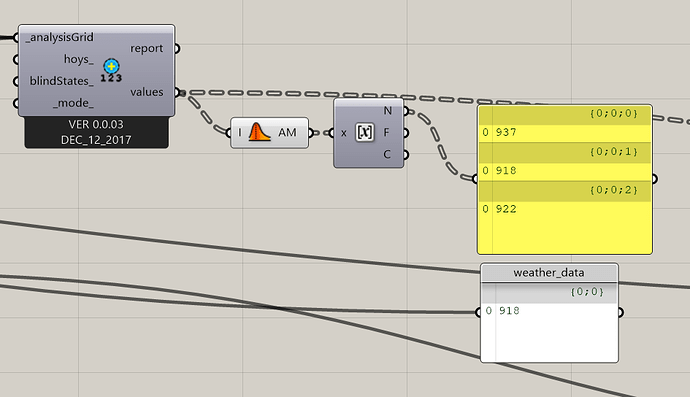I checked the file and I’m getting different results from yours.
- Radiance’s gendaylit overestimates the values.
- Radiation recipe is right on with the results.
- DC recipe for Radiation is noisy but the average results is pretty close to the value from the weather file.
Here is the file: radiation_study_comparison.gh (433.7 KB)
The difference between RAD recipe and DC recipes is that RAD is using a simpler approach to calculate the skies.
DC method generates the Tregenza total sky, Tregenza direct sky and sun matrix (analemma) and runs 3 calculations. The final result is total - direct + sun. In this approach we try to replace the inaccurate patched sky with correct sun matrix but at the same time the calculation under the patched sky is happening twice which adds the noise to the scene. Here is the results from total and direct sky side by side.
RAD recipe on the other hand generates Tregenza diffuse sky and sun matrix and adds them up. In this approach we run the analysis under patched sky once and so there is less noise in the calculation. If you’re looking to calculate annual radiation I suggest you to use the Radiation recipe component.
PS: Update both ladybug and honeybee from GitHub before testing the file.

